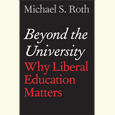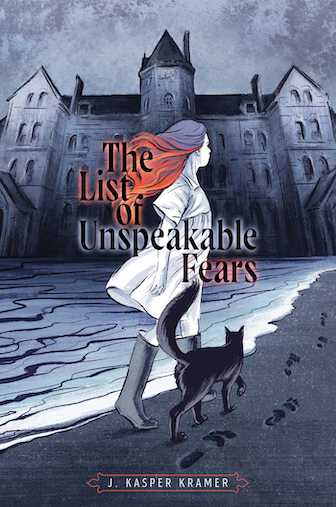The Sound of the Sentence
Amy Hempel finds truth in fiction sentence by sentence
The first short story Amy Hempel ever wrote, “In the Cemetery Where Al Jolson Is Buried,” begins like this: “Tell me things I won’t mind forgetting.”
 It’s an unforgettable opening to one of the most anthologized stories of the twentieth century. When we learn that the plea comes from the narrator’s terminally ill best friend, the sentence becomes haunted by a new sense of loss and love, of remembering and mourning. Hempel’s attention to the sentence-level sounds of her work means that reading her fiction offers up an almost musical experience, one where rhythm and pulse seem to affect the reader in tandem with the goings-on of the story itself.
It’s an unforgettable opening to one of the most anthologized stories of the twentieth century. When we learn that the plea comes from the narrator’s terminally ill best friend, the sentence becomes haunted by a new sense of loss and love, of remembering and mourning. Hempel’s attention to the sentence-level sounds of her work means that reading her fiction offers up an almost musical experience, one where rhythm and pulse seem to affect the reader in tandem with the goings-on of the story itself.
Her attention to the sentence has led to attention for her stories. She has been awarded the Rea Award for the Short Story, the Pen/Malamud Award for Short Fiction, a USA Fellowship Grant, and a Guggenheim, among other honors. Her award-winning Collected Stories (2006) contains her four published collections, Reasons to Live (1985), At the Gates of the Animal Kingdom (1990), Tumble Home (1997), and The Dog of the Marriage (2005). There is often a misconception that short stories serve as warm-ups to a novel, but Hempel demonstrates that the short story can share more genetic code with poetry than with longer narratives. Her work has become increasingly condensed, sometimes moving into the territory of a prose poem. Several stories consist of no more than a couple of lines: “Memoir,” in her fourth collection, reads, “Just once in my life—oh, when have I ever wanted anything just once in my life?”
In part because of these extremely short stories, Hempel has often been labeled a minimalist, alongside writers such as Raymond Carver, Mary Robison, and Gordon Lish, the famed editor with whom she studied in the seventies. Yet “minimalism” suggests a kind of smallness, and Hempel prefers “precisionist,” the term Raymond Carver used. Her stories capture the precise texture of small moments and reveal their largeness as those small moments accrue to a greater feeling. In her story “The Harvest,” also widely anthologized, she writes, “I leave a lot out when I tell the truth. The same when I write a story.”
If Hempel leaves things out to get closer to the truth, writing about Hempel’s stories leaves out some of the truth in experiencing these stories on the page. Many of them defy easy summary, and most characters don’t even have names. In “Offertory,” the closing story in The Collected Stories, Hempel’s unnamed narrator notes her lover’s preferences for the stories she tells him: “Names were not the details that mattered to him. What mattered was the most refined particularity of our actions, and the declarative nature of my narrative. He did not want me to use language that said anything other than what it was.”
 The same might be said of Hempel’s own aims as a writer. But the demands set forth by the lover in “Offertory,” like the demands expressed by the friend in “In the Cemetery Where Al Jolson Was Buried,” also speak to why so many of Hempel’s stories feel like reading a letter from a dear, far-flung friend. They make me want to write back, to respond.
The same might be said of Hempel’s own aims as a writer. But the demands set forth by the lover in “Offertory,” like the demands expressed by the friend in “In the Cemetery Where Al Jolson Was Buried,” also speak to why so many of Hempel’s stories feel like reading a letter from a dear, far-flung friend. They make me want to write back, to respond.
While the stories sometimes have the aura of one human voice calling out to another, they are also filled with all sorts of non-human voices. Hempel has written moving pieces of nonfiction about her volunteer work raising puppies to serve as seeing-eye guides to the blind; she has also co-edited, with the writer Jim Shepherd, Unleashed: Poems by Writers’ Dogs, in which writers compose poems from their dogs’ point of view. In a 1997 interview with BOMB, she said, “[T]o my knowledge animals don’t hide from real feeling behind sarcasm or irony.” Something about the presence of animals keeps her human narrators more honest and vulnerable, less standoffish.
That’s not to say these stories are never funny, and part of the humor comes from their refusal to follow the traditional structure of a short story. For Hempel, the typical plot line—with its rising action, its climax, its single moment of epiphany—appears to be too artificial, something less than lifelike. In “The Annex,” the narrator stares out at the graveyard across from her home and watches the men who run the bulldozers clearing out the rows of graves. “[T]he men who run the bulldozers and things don’t call what they are clearing a row,” the narrator notes. “They call it a plot line.”
In “Tumble Home,” Hempel embraces not the linear plot line but the ordinary moment. “It’s a time honored fact that after a close call, we all embrace the ordinary. But that is because it has become miraculous. Or we have-alive to see it.” If Hempel’s stories help readers embrace the ordinary, they can also help those readers feel more alive, turning our everyday perceptions into something closer to awe, to miracle.

Lee Conell’s debut collection Subcortical recently won The Story Prize Spotlight Award. Her fiction has appeared in places like Kenyon Review, Guernica, Glimmer Train, and American Short Fiction. She earned her M.F.A. at Vanderbilt University and lives in Nashville.


